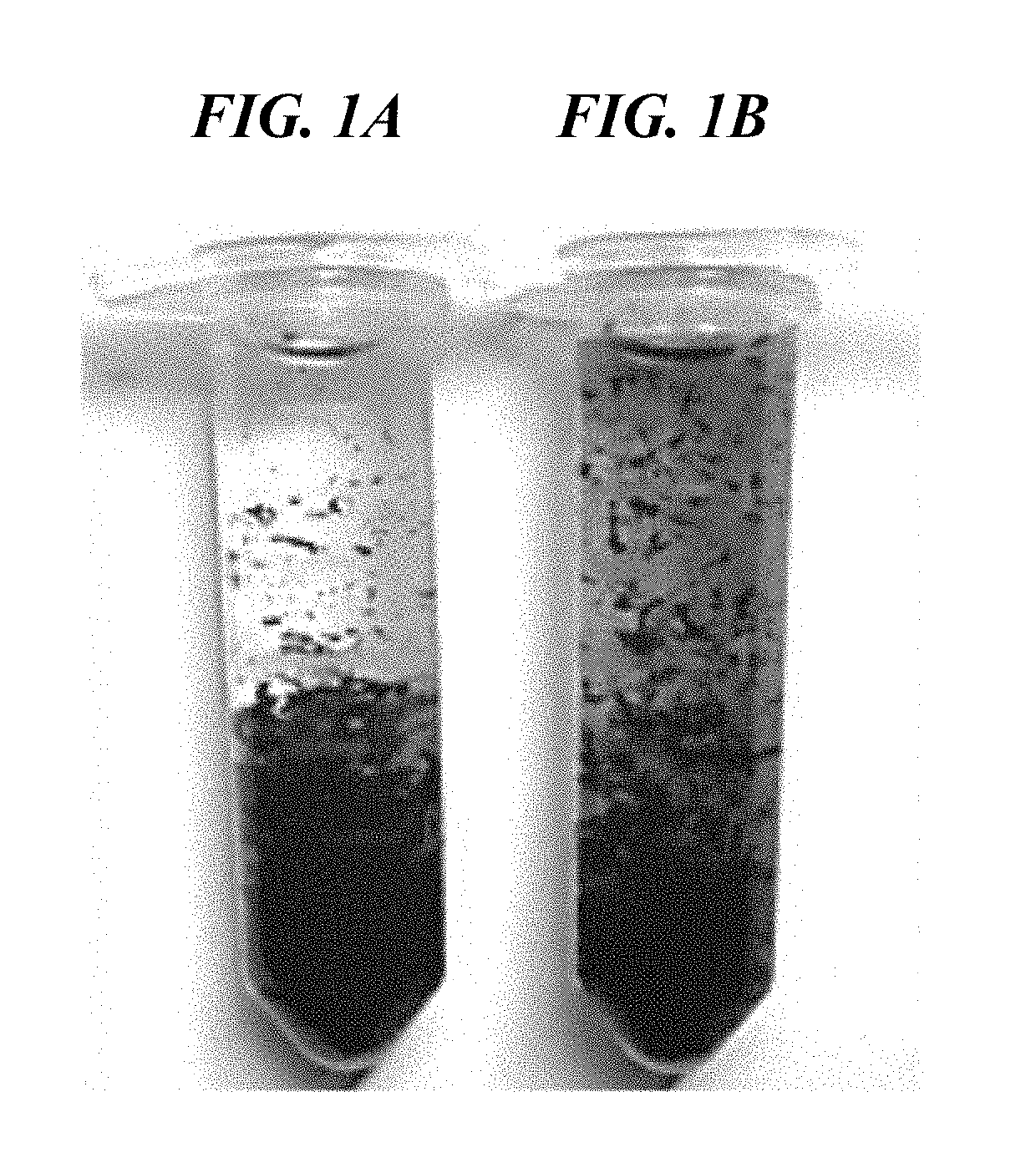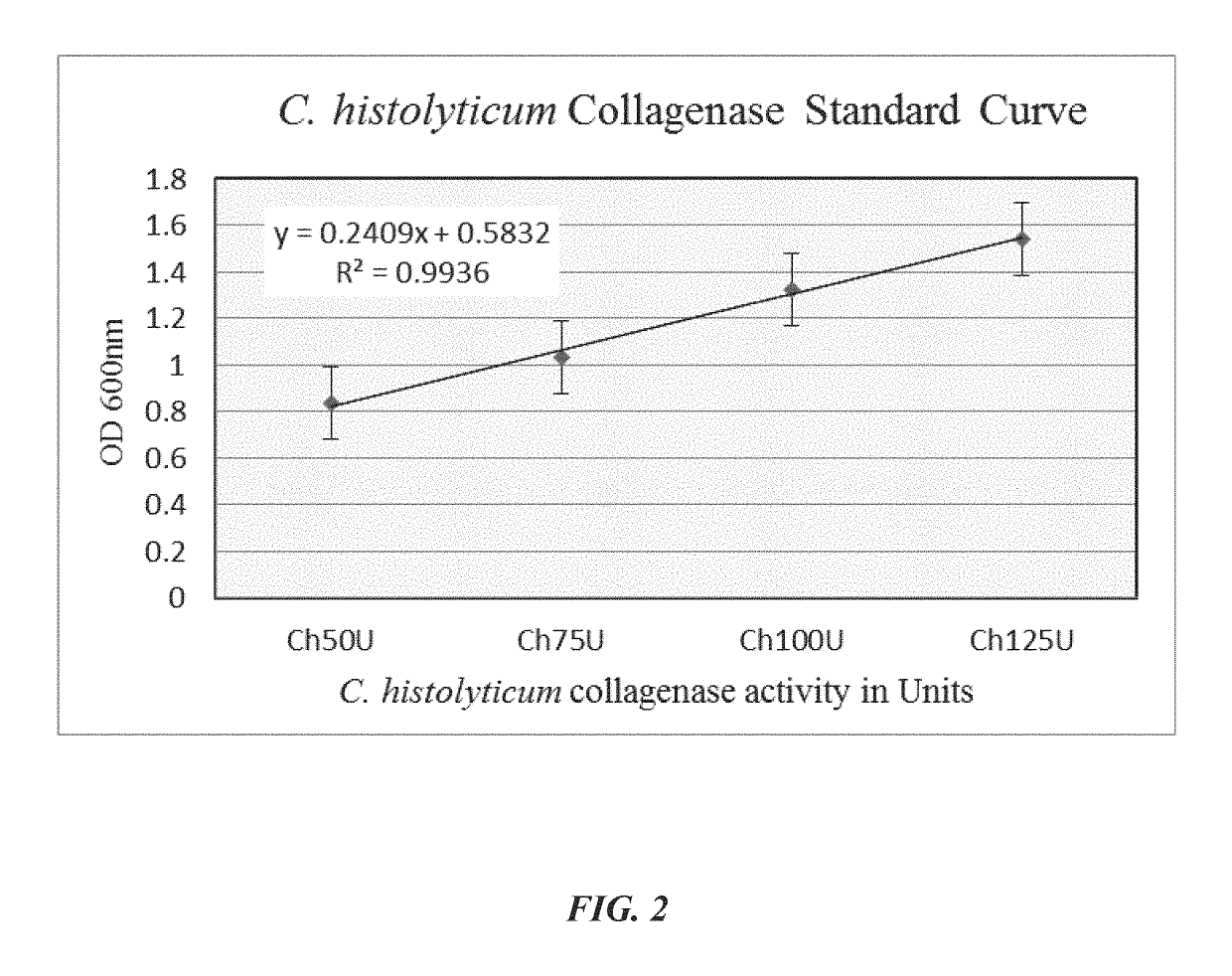Collagenase assay
a collagenase and assay technology, applied in the field of blue collagenase assays, can solve the problems of inability to measure the activity of soluble or insoluble cell or tissue-associated collagenase individually or in combination, and achieve the effect of improving the detection accuracy and reproducibility
- Summary
- Abstract
- Description
- Claims
- Application Information
AI Technical Summary
Benefits of technology
Problems solved by technology
Method used
Image
Examples
example 1
[0039]1. Staining of Collagen
[0040]Bovine Achilles tendon type I collagen fibrils were obtained from Sigma-Aldrich or prepared according to the method of Einbinder, J. et al., Binding of mucopolysaccharides and dyes by collagen (J. Biol. Chem., 188, 335, 1951). Collagen fibrils were air-dried or lyophilized, and then cut into shorter pieces using any suitable methodology, for example hand-cutting with scissors or by using a blender at “grinding / chopping” setting. The fibrils were passed through a 1 mm sieve and collected as dry collagen.
[0041]The dry collagen was mixed with about 0.1%-0.2% COOMASSIE Brilliant Blue in a solution of about 10% acetic acid, about 40% methanol in 50% double-distilled water (standard method for staining protein bands in polyacrylamide gel), at a ratio of 500 mg collagen in 20-30 ml of dye in acetic acid-methanol-water solution, in a conical centrifuge tube on a rotator for around 3-5 min at room temperature when all the collagen fibrils were saturated wit...
example 2
[0047]As an example, application of the blue collagenase assay to soluble Clostridium histolyticum collagenase (see FIGS. 2 and 4A) and cell-associated Streptococcus mutans collagenase (see FIGS. 3A-3C and 4B) is described herein.
[0048]The method generally includes the following steps:[0049]1. The collagen fibrils are stained using COOMASSIE Brilliant Blue R-250 (C46-H44-N3-07-S2-Na) or other suitable dye.[0050]2. The blue collagen fibrils are suspended in collagenase substrate buffer (50 mM Tris, 50 mM NaCl, 10 mM CaCl2, pH 7.5), with sodium azide added at 0.02%.[0051]3. The blue collagen fibrils in suspension are incubated with the test sample at 37° C. on a rotator (see FIG. 3A).[0052]4. The collagenase activity results in the production of blue collagen particulates that can be readily observed.[0053]5. After the incubation time of three (3) hours or longer, the mixture is filtered through glass wool / fibers to which the blue collagen fibrils are retained, and the small blue frag...
PUM
| Property | Measurement | Unit |
|---|---|---|
| wave length | aaaaa | aaaaa |
| pH | aaaaa | aaaaa |
| temperature | aaaaa | aaaaa |
Abstract
Description
Claims
Application Information
 Login to View More
Login to View More - R&D
- Intellectual Property
- Life Sciences
- Materials
- Tech Scout
- Unparalleled Data Quality
- Higher Quality Content
- 60% Fewer Hallucinations
Browse by: Latest US Patents, China's latest patents, Technical Efficacy Thesaurus, Application Domain, Technology Topic, Popular Technical Reports.
© 2025 PatSnap. All rights reserved.Legal|Privacy policy|Modern Slavery Act Transparency Statement|Sitemap|About US| Contact US: help@patsnap.com



